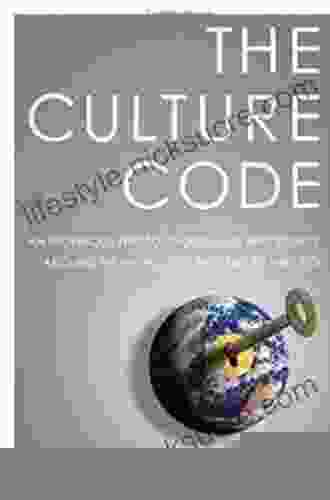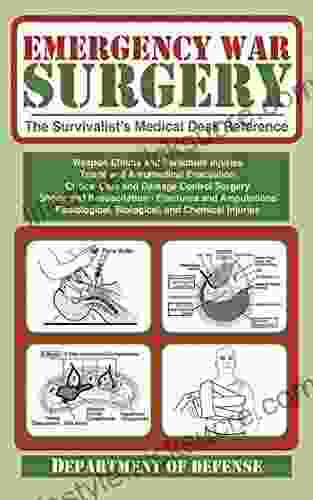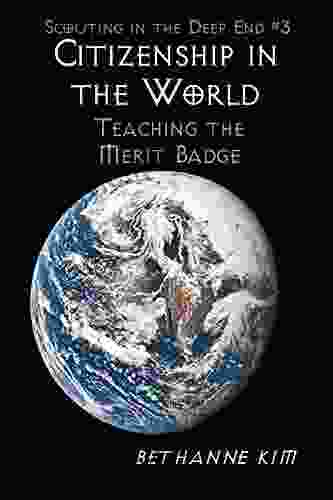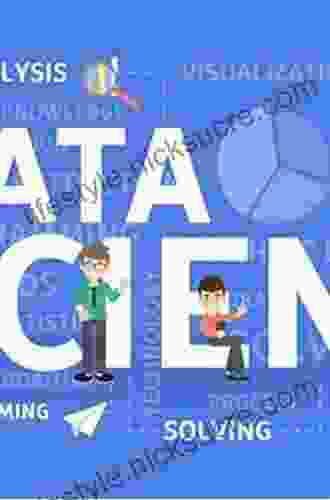Unlocking the Power of Data Science: A Comprehensive Guide

In the rapidly evolving digital landscape, data has emerged as an invaluable asset, holding the potential to transform industries, businesses, and decision-making processes. Data science, the field that harnesses this data to extract meaningful insights, has become increasingly indispensable, empowering organizations across all sectors to make better-informed decisions and gain a competitive edge. This article provides a comprehensive guide to data science, exploring its fundamentals, applications, tools, and techniques, empowering you to navigate the ever-changing data-driven landscape.
Understanding Data Science
Data science is an interdisciplinary field that combines mathematics, statistics, computer science, and domain knowledge to extract useful information from raw data. It involves collecting, cleaning, analyzing, visualizing, and interpreting data to uncover patterns, trends, and relationships that can help organizations make informed decisions.
Data scientists are experts who possess a wide range of skills, including:
4.7 out of 5
| Language | : | English |
| File size | : | 40771 KB |
| Text-to-Speech | : | Enabled |
| Screen Reader | : | Supported |
| Enhanced typesetting | : | Enabled |
| Print length | : | 521 pages |
- Statistical modeling and machine learning
- Programming and data manipulation
- Database querying and data extraction
- Data visualization and communication
- Problem-solving and analytical thinking
Key Concepts in Data Science
1. Data Types and Structures:
Data comes in various forms, including structured (e.g., excel spreadsheets, databases),semi-structured (e.g., JSON, XML),and unstructured (e.g., text, images, videos). Understanding the structure and characteristics of data is crucial for effective analysis.
2. Data Collection and Extraction:
Data can be collected from diverse sources such as sensors, web scraping, surveys, and social media. Data extraction involves retrieving and preprocessing data from these sources to prepare it for analysis.
3. Data Preprocessing:
Before analysis, data must be cleaned, transformed, and formatted to remove errors, inconsistencies, and missing values. Preprocessing ensures the quality and reliability of the data.
4. Statistical Modeling and Machine Learning:
Statistical modeling and machine learning algorithms are used to identify patterns and extract insights from data. These algorithms can be supervised, unsupervised, or semi-supervised, depending on the availability of labeled data and the desired task.
5. Data Visualization:
Data visualization techniques such as charts, graphs, and dashboards help communicate complex insights and trends derived from data analysis. Effective data visualization is essential for decision-makers to understand and interpret the results.
Applications of Data Science
Data science has far-reaching applications across numerous industries and domains, including:
1. Business Intelligence and Analytics:
Data science is used to analyze customer data, market trends, and operational metrics to improve decision-making, optimize processes, and increase revenue.
2. Healthcare:
Data science helps in diagnosing diseases earlier, predicting patient outcomes, and developing personalized treatment plans. It also enables the analysis of large patient datasets to identify patterns and trends in medical research.
3. Finance:
Data science is employed in risk assessment, fraud detection, and portfolio optimization. Financial institutions use data science to make informed investments and manage financial risks.
4. Manufacturing:
Data science is used in predictive maintenance, quality control, and supply chain optimization. It helps manufacturers improve efficiency, reduce downtime, and ensure product quality.
5. Marketing and Advertising:
Data science enables marketers to target specific audiences, optimize campaigns, and measure the effectiveness of marketing initiatives. It also helps in understanding customer behavior and preferences.
Tools and Techniques in Data Science
Numerous tools and techniques are used in data science, including:
1. Programming Languages:
Python and R are the most widely used programming languages in data science due to their extensive libraries and ease of use.
2. Data Analysis Libraries:
Libraries such as Pandas, NumPy, and Scikit-learn provide powerful data manipulation and analysis functions for Python and R.
3. Cloud Computing Platforms:
Cloud platforms such as AWS, Azure, and Google Cloud offer scalable and cost-effective infrastructure for data storage, processing, and analysis.
4. Data Visualization Tools:
Tableau, Power BI, and Google Data Studio are popular data visualization tools that enable users to create interactive dashboards and visualizations.
5. Machine Learning and Deep Learning Frameworks:
TensorFlow, Keras, and PyTorch are widely used frameworks for developing machine learning and deep learning models.
The Data Science Process
The data science process typically involves the following steps:
1. Problem Definition:
Clearly define the business problem or question that needs to be addressed.
2. Data Collection and Preprocessing:
Collect and prepare the necessary data from various sources.
3. Exploratory Data Analysis:
Explore the data to understand its characteristics, find patterns, and identify outliers.
4. Model Selection and Training:
Select and train appropriate data science models to fit the data and make predictions.
5. Model Evaluation and Deployment:
Evaluate the performance of the model and deploy it to production if it meets the desired performance criteria.
Data science has revolutionized the way organizations leverage data to make informed decisions and gain a competitive advantage. By understanding the fundamentals, applications, tools, and techniques of data science, you can harness the power of data to transform your business and make a meaningful impact in the data-driven landscape. As the field of data science continues to evolve, it will undoubtedly play an increasingly crucial role in shaping the future of industries, businesses, and society as a whole.
4.7 out of 5
| Language | : | English |
| File size | : | 40771 KB |
| Text-to-Speech | : | Enabled |
| Screen Reader | : | Supported |
| Enhanced typesetting | : | Enabled |
| Print length | : | 521 pages |
Do you want to contribute by writing guest posts on this blog?
Please contact us and send us a resume of previous articles that you have written.
 Fiction
Fiction Non Fiction
Non Fiction Romance
Romance Mystery
Mystery Thriller
Thriller SciFi
SciFi Fantasy
Fantasy Horror
Horror Biography
Biography Selfhelp
Selfhelp Business
Business History
History Classics
Classics Poetry
Poetry Childrens
Childrens Young Adult
Young Adult Educational
Educational Cooking
Cooking Travel
Travel Lifestyle
Lifestyle Spirituality
Spirituality Health
Health Fitness
Fitness Technology
Technology Science
Science Arts
Arts Crafts
Crafts DIY
DIY Gardening
Gardening Petcare
Petcare Brian Klaas
Brian Klaas Anna B Doe
Anna B Doe Joseph Klaits
Joseph Klaits Steve Greenberg
Steve Greenberg Dom Amore
Dom Amore Sandra Luna Mccune
Sandra Luna Mccune Frank Nappi
Frank Nappi George Bernard Shaw
George Bernard Shaw Deborah Vinall Psyd Lmft
Deborah Vinall Psyd Lmft Erin Chack
Erin Chack Josh Taylor
Josh Taylor Pamela Lynn
Pamela Lynn Rich Rousseau
Rich Rousseau Michaela Riva Gaaserud
Michaela Riva Gaaserud Eric E Bowne
Eric E Bowne Kenneth P Stephens
Kenneth P Stephens Naomi Oreskes
Naomi Oreskes Ray Mancini
Ray Mancini Jason Thompson
Jason Thompson Sean Go
Sean Go Ruth M Tappen
Ruth M Tappen David Grinspoon
David Grinspoon Pinky Mckay
Pinky Mckay Erika Napoletano
Erika Napoletano Sandra T Barnes
Sandra T Barnes David Ranney
David Ranney Wendy Margolis
Wendy Margolis American Math Academy
American Math Academy Benjamin Jelen
Benjamin Jelen Ruth Nestvold
Ruth Nestvold Deborah J Rumsey
Deborah J Rumsey Catherine Ryan Gregory
Catherine Ryan Gregory Rose Mannering
Rose Mannering Theodore Sider
Theodore Sider Marshall Goldsmith
Marshall Goldsmith Jd Mader
Jd Mader Melody Schreiber
Melody Schreiber Laura Slinn
Laura Slinn Angela Moore
Angela Moore Jayson Gaddis
Jayson Gaddis Katherine Kurtz
Katherine Kurtz Art Star
Art Star Rosalind Wiseman
Rosalind Wiseman Tavi Gevinson
Tavi Gevinson Jameson M Wetmore
Jameson M Wetmore Eugenia Viti
Eugenia Viti Kathy A Zahler
Kathy A Zahler Tamora Pierce
Tamora Pierce Kevin Stiegelmaier
Kevin Stiegelmaier Amy Blakeslee
Amy Blakeslee Spike Dykes
Spike Dykes Ned Vizzini
Ned Vizzini Harley Reid
Harley Reid Amber Lia
Amber Lia Chris Carlsson
Chris Carlsson Warren B Powell
Warren B Powell C L Simchick
C L Simchick Victoria Richards
Victoria Richards Dima Zales
Dima Zales Jason Borte
Jason Borte Candida Lawrence
Candida Lawrence Danny Dreyer
Danny Dreyer Kathy Spratt
Kathy Spratt Shannon O Bourne
Shannon O Bourne Jerry D Moore
Jerry D Moore Andy Hunt
Andy Hunt Marit Weisenberg
Marit Weisenberg Nina Freudenberger
Nina Freudenberger Theresa I Soto
Theresa I Soto Kathleen Glasgow
Kathleen Glasgow Derek Thompson
Derek Thompson Anne Chambers
Anne Chambers Desi Northup
Desi Northup Tijan
Tijan Jonathan Law
Jonathan Law Victoria Wood
Victoria Wood Guillaume Haeringer
Guillaume Haeringer Joseph Conrad
Joseph Conrad Suzanne Stabile
Suzanne Stabile Oscar Baechler
Oscar Baechler Anthony Haynes
Anthony Haynes Jake Maddox
Jake Maddox Brittany Clair
Brittany Clair Glenn Stout
Glenn Stout Randall E Schumacker
Randall E Schumacker Cheri Rae
Cheri Rae Pav Bryan
Pav Bryan Mark Stallard
Mark Stallard Sian Warriner
Sian Warriner Ned Seaton
Ned Seaton Joan Freeman
Joan Freeman Ana And Jack Hicks
Ana And Jack Hicks Brian Kateman
Brian Kateman E T Bryant
E T Bryant Kresley Cole
Kresley Cole Jenni Hicks
Jenni Hicks Cookie O Gorman
Cookie O Gorman Donovan Hohn
Donovan Hohn Philippa Langley
Philippa Langley Sue Monk Kidd
Sue Monk Kidd Courtney Defeo
Courtney Defeo John Jacobs
John Jacobs Alan I Marcus
Alan I Marcus Dmv Test Bank
Dmv Test Bank Vinod Kumar Khanna
Vinod Kumar Khanna Louise Bates Ames
Louise Bates Ames James E Packer
James E Packer Nicholas A Christakis
Nicholas A Christakis Trent Shelton
Trent Shelton Eric Tyndall
Eric Tyndall Marco Ferrero
Marco Ferrero William Glasser M D
William Glasser M D Jeffrey Steadman
Jeffrey Steadman David Guymer
David Guymer Jon Bonnell
Jon Bonnell Pico Iyer
Pico Iyer Gina Chen
Gina Chen Catherine Dees
Catherine Dees Martin Pollizotto
Martin Pollizotto Amy Brown
Amy Brown L Frank Baum
L Frank Baum C W Lockhart
C W Lockhart Paul Kockelman
Paul Kockelman Topher Donahue
Topher Donahue John A Buehrens
John A Buehrens Jenny Landreth
Jenny Landreth Johan Norberg
Johan Norberg Elizabeth Lim
Elizabeth Lim Amy Camp
Amy Camp Norman Doidge
Norman Doidge Ronda Rousey
Ronda Rousey Eric T Knight
Eric T Knight Amiee Mueller
Amiee Mueller Stephenie Meyer
Stephenie Meyer Matthew L Martin
Matthew L Martin Byron Nelson
Byron Nelson Roman Gelperin
Roman Gelperin Wolf Moon
Wolf Moon Joe Dan Lowry
Joe Dan Lowry John Bingham
John Bingham Michael Winkelman
Michael Winkelman David Salsburg
David Salsburg Christine Fanthome
Christine Fanthome Jack Tupp
Jack Tupp Amber Smith
Amber Smith Amber O Neal Johnston
Amber O Neal Johnston Joe Nickell
Joe Nickell Tyler Simmons
Tyler Simmons Jonathan Bartlett
Jonathan Bartlett Paul Graham
Paul Graham Jacob Bronowski
Jacob Bronowski Julie Caplin
Julie Caplin Paul Dickson
Paul Dickson Andy Couturier
Andy Couturier Arlene Blum
Arlene Blum Julie Barlow
Julie Barlow Cole Hersowitz
Cole Hersowitz Kate Fox
Kate Fox Robert W D Ball
Robert W D Ball Donna Williams
Donna Williams Sheena Johnstone
Sheena Johnstone Vivian Vande Velde
Vivian Vande Velde Meikang Qiu
Meikang Qiu Paul Schwartz
Paul Schwartz Jeff Martone
Jeff Martone David Yoon
David Yoon Redmond O Hanlon
Redmond O Hanlon Stephen M Barr
Stephen M Barr Md Mahady Hasan
Md Mahady Hasan Mark Taylor
Mark Taylor Elise Christie
Elise Christie Garrett M Fitzmaurice
Garrett M Fitzmaurice Therese A Rando
Therese A Rando Lizabeth Hardman
Lizabeth Hardman Josephine Atluri
Josephine Atluri Grant Dever
Grant Dever Emma Mae Jenkins
Emma Mae Jenkins Alan Margot
Alan Margot Chris Irons
Chris Irons Tom Colicchio
Tom Colicchio Adam Cort
Adam Cort Chad Starkey
Chad Starkey David Elkington
David Elkington Mark Turley
Mark Turley Rob Antoun
Rob Antoun Christopher E Larsen
Christopher E Larsen Gia Giasullo
Gia Giasullo William Bohan
William Bohan Dr Elizabeth Cherevaty Nd Rac
Dr Elizabeth Cherevaty Nd Rac Joellen Patterson
Joellen Patterson James W Williams
James W Williams Amara Charles
Amara Charles Krystal Sutherland
Krystal Sutherland Fred Pyrczak
Fred Pyrczak Julie Mosier
Julie Mosier Joseph P Weir
Joseph P Weir Rick Stanton
Rick Stanton Wade Rouse
Wade Rouse Leslie Sansone
Leslie Sansone Sarah Dessen
Sarah Dessen Jennifer S Kelly
Jennifer S Kelly Jack Freeman
Jack Freeman Michael Reichert
Michael Reichert Jim Santos
Jim Santos Marisa Anne Bass
Marisa Anne Bass Sharon K Zumbrunn
Sharon K Zumbrunn Sheri Van Dijk
Sheri Van Dijk Jack Weatherford
Jack Weatherford Jeanne Ryan
Jeanne Ryan Christina Kamp
Christina Kamp Alexandrea Weis
Alexandrea Weis Amelia Freer
Amelia Freer Mike Adamick
Mike Adamick Cordelia K Castel
Cordelia K Castel Tabitha Suzuma
Tabitha Suzuma Stanley I Greenspan
Stanley I Greenspan William Stillman
William Stillman Mac Fortner
Mac Fortner Ruta Nonacs
Ruta Nonacs James Mullaney
James Mullaney Cathy Williams
Cathy Williams Eric Zweig
Eric Zweig Steven Charleston
Steven Charleston Laurie A Watkins
Laurie A WatkinsK D
 John Maxwell Wood
John Maxwell Wood Helen E Fisher
Helen E Fisher Dolores Kong
Dolores Kong Amante P Marinas
Amante P Marinas Stephen J Collier
Stephen J Collier Bill Carter
Bill Carter Zeshan Qureshi
Zeshan Qureshi Peter Larson
Peter Larson Clotaire Rapaille
Clotaire Rapaille Trevor Day
Trevor Day Helena P Blavasky
Helena P Blavasky Kyle Hunt
Kyle Hunt Charles Thompson
Charles Thompson Don Stradley
Don Stradley Alex Stone
Alex Stone Claudia J Carr
Claudia J Carr Chloe Gong
Chloe Gong Nikhil Bhardwaj
Nikhil Bhardwaj Susanna Heli
Susanna Heli A Sorority Of Mothers
A Sorority Of Mothers Lisa Maloney
Lisa Maloney Holly Herrick
Holly Herrick Amy Bizzarri
Amy Bizzarri Jeff Gaudette
Jeff Gaudette Joseph Mcmoneagle
Joseph Mcmoneagle Hadley Wickham
Hadley Wickham Amy Baldwin
Amy Baldwin Saleh Alkhalifa
Saleh Alkhalifa Malba Tahan
Malba Tahan Iain Pardoe
Iain Pardoe Laekan Zea Kemp
Laekan Zea Kemp Erica T Lehrer
Erica T Lehrer Matthew Lombardi
Matthew Lombardi Joe Dante
Joe Dante Gal Dem
Gal Dem Kathleen M Stacy
Kathleen M Stacy Theresa Y Wee M D
Theresa Y Wee M D Deborah Lipsky
Deborah Lipsky Peter Worley
Peter Worley Lady Antiva
Lady Antiva Sarah Woodbury
Sarah Woodbury Jean Rose
Jean Rose Ananda Lowe
Ananda Lowe Denise Ni
Denise Ni Amelia Edith Huddleston Barr
Amelia Edith Huddleston Barr Buck Tilton
Buck Tilton John Mcpherson
John Mcpherson Traci Gormley
Traci Gormley The 60 Minutes Summary
The 60 Minutes Summary Rob Fisher
Rob Fisher Shaun Gallagher
Shaun Gallagher Diane Greer
Diane Greer Nathan Belofsky
Nathan Belofsky Patrick O Sullivan
Patrick O Sullivan William G Dever
William G Dever Sarah Morgan Haydock
Sarah Morgan Haydock Jack Nisbet
Jack Nisbet Tahlia Kirk
Tahlia Kirk Don Mann
Don Mann Rodney M Howard Browne
Rodney M Howard Browne Amy Bleuel
Amy Bleuel Swede Burns
Swede Burns Toni Tone
Toni Tone Joseph Wayne Smith
Joseph Wayne Smith Sarah Sumbal
Sarah Sumbal Thom Hartmann
Thom Hartmann Mark Worden
Mark Worden Kris Leonard
Kris Leonard Doug Peterson
Doug Peterson Henry A Zumbrun 2
Henry A Zumbrun 2 Dan Abnett
Dan Abnett Ken Chaddock
Ken Chaddock Dave Hanson
Dave Hanson Heather Macfadyen
Heather Macfadyen Silvia Botros
Silvia Botros Cynthia Gabriel
Cynthia Gabriel Jean Christie Ashmore
Jean Christie Ashmore Brendan Leonard
Brendan Leonard Shere Hite
Shere Hite Torey L Hayden
Torey L Hayden Brian Pace
Brian Pace Shalabh Aggarwal
Shalabh Aggarwal Terry Wieland
Terry Wieland Laini Taylor
Laini Taylor Stephen Barr
Stephen Barr Candy Verney
Candy Verney Peter Hayes
Peter Hayes Kasie West
Kasie West Craig Larman
Craig Larman Susan White
Susan White Cody Monk
Cody Monk Andy Singleton
Andy Singleton Amy Adele Hasinoff
Amy Adele Hasinoff Reinhold Messner
Reinhold Messner Sean Gibson
Sean Gibson Liz Fosslien
Liz Fosslien Eugene C Toy
Eugene C Toy Jennifer Margulis
Jennifer Margulis Lars Andersen
Lars Andersen Jean Van T Hul
Jean Van T Hul Robb Walsh
Robb Walsh Lisa Zimmer Hatch
Lisa Zimmer Hatch Clancy Cavnar
Clancy Cavnar Joe E Harvey
Joe E Harvey Charles Hall
Charles Hall Heidi J Larson
Heidi J Larson J Marin Younker
J Marin Younker H Bedford Jones
H Bedford Jones Sterling Test Prep
Sterling Test Prep K F Breene
K F Breene Gary Wiener
Gary Wiener Amy Mccready
Amy Mccready Nick Kolenda
Nick Kolenda J Stephen Jones
J Stephen Jones J L Weil
J L Weil Joseph Howse
Joseph Howse Michael Abayomi
Michael Abayomi Bethanne Kim
Bethanne Kim John Lukacs
John Lukacs Md Rezowan Ahmed
Md Rezowan Ahmed Kate Parham Kordsmeier
Kate Parham Kordsmeier Kumo Kagyu
Kumo Kagyu Charles J Alsheimer
Charles J Alsheimer Derrick Jensen
Derrick Jensen Jessica Cunsolo
Jessica Cunsolo Jan E Stets
Jan E Stets Amby Cooper
Amby Cooper Christopher Cousteau
Christopher Cousteau Steven C Hayes
Steven C Hayes Rosanna Davison
Rosanna Davison Gail Maccoll
Gail Maccoll Michael Cosgrove
Michael Cosgrove Ignatius Donnelly
Ignatius Donnelly Jan Marie Mueller
Jan Marie Mueller Larry K Brendtro
Larry K Brendtro Patricia L Papernow
Patricia L Papernow Shanna Cunning
Shanna Cunning American Psychological Association
American Psychological Association Mariano Anaya
Mariano Anaya Tim Hornbaker
Tim Hornbaker Michelle Newhart
Michelle Newhart Muhammad Vandestra
Muhammad Vandestra Carlo Buzzichelli
Carlo Buzzichelli Andrey Ryanskiy
Andrey Ryanskiy Kate Tietje
Kate Tietje Frederick Lenz
Frederick Lenz Devin Olsen
Devin Olsen David Burch
David Burch Kieron Gillen
Kieron Gillen Don Orwell
Don Orwell John L Field
John L Field American Baseball Coaches Association
American Baseball Coaches Association Karen Deerwester
Karen Deerwester Stephen Walker
Stephen Walker Paul Oliver
Paul Oliver Jonathon Miller Weisberger
Jonathon Miller Weisberger Valerie Bass
Valerie Bass Test Masters
Test Masters Dana Obleman
Dana Obleman Edward J Denecke
Edward J Denecke Kezia Endsley
Kezia Endsley Stanley J Farlow
Stanley J Farlow Amber Lee Sellers
Amber Lee Sellers Don Bowers
Don Bowers Maria Youtman
Maria Youtman Kristine Kathryn Rusch
Kristine Kathryn Rusch Julie Schacht Sway
Julie Schacht Sway Antonio R Damasio
Antonio R Damasio Rick Deutsch
Rick Deutsch Umer W
Umer W Joel Cotton
Joel Cotton Autumn Jordon
Autumn Jordon Michael R Poll
Michael R Poll Josiah Hesse
Josiah Hesse Amber Zygutis
Amber Zygutis Dan Schlossberg
Dan Schlossberg Amber Foster
Amber Foster Amira Mikhail
Amira Mikhail Paul Kaplowitz
Paul Kaplowitz Thomas J Whalen
Thomas J Whalen Amelia Parker
Amelia Parker Bruce Dowbiggin
Bruce Dowbiggin Sarah J Maas
Sarah J Maas Marina Robb
Marina Robb Robert A Weinberg
Robert A Weinberg Janet Engle
Janet Engle Nicholeen Peck
Nicholeen Peck Jocelyn Goodwin
Jocelyn Goodwin Amir Alexander
Amir Alexander Ryan Gray
Ryan Gray Anthony Horowitz
Anthony Horowitz Jack Falla
Jack Falla Amy B Middleman
Amy B Middleman Timothy Malcolm
Timothy Malcolm Tracy Lorraine
Tracy Lorraine Gerald Corey
Gerald Corey Bridget Ericsson
Bridget Ericsson Philip Gibson
Philip Gibson Michael Ondaatje
Michael Ondaatje James P Kelly
James P Kelly Dr Bob Rotella
Dr Bob Rotella Tanya Turner
Tanya Turner Jessica Hatcher Moore
Jessica Hatcher Moore Elizabeth S Gilbert
Elizabeth S Gilbert Paul Wieland
Paul Wieland Christopher Harlan
Christopher Harlan Stephen Goodwin
Stephen Goodwin Sonia Hartl
Sonia Hartl Ashley Scott
Ashley Scott Nisha Garg
Nisha Garg June Cl Tan
June Cl Tan Amit Saha
Amit Saha Douglas Wilson
Douglas Wilson John Ferrell
John Ferrell Alex Polyakov
Alex Polyakov Nikala Smith
Nikala Smith Vicki Hearne
Vicki Hearne Neville Goddard
Neville Goddard Jeremy J Baumberg
Jeremy J Baumberg Sandra Bardwell
Sandra Bardwell Robert Melillo
Robert Melillo Mark W T Harvey
Mark W T Harvey Tim Marshall
Tim Marshall Django Paris
Django Paris Richard Cohen
Richard Cohen Ellie Wood
Ellie Wood Victor J Stenger
Victor J Stenger Tom Taulli
Tom Taulli Howard J Meditz
Howard J Meditz Mitt Romney
Mitt Romney Robyn Davidson
Robyn Davidson Amie Lands
Amie Lands Vince Kotchian
Vince Kotchian Chad Ford
Chad Ford Camille Glenn
Camille Glenn Isabella Krystynek
Isabella Krystynek Randy Schultz
Randy Schultz Erik Qualman
Erik Qualman K M Shea
K M Shea Amrita Pande
Amrita Pande Tom Patri
Tom Patri Amie Kaufman
Amie Kaufman Michael Parker Pearson
Michael Parker Pearson Rachel Gurevich
Rachel Gurevich Jack Ewing
Jack Ewing Temple Grandin
Temple Grandin Tom Deck
Tom Deck Amy Perry
Amy Perry Dr Scott A Johnson
Dr Scott A Johnson P Aarne Vesilind
P Aarne Vesilind Martin Williams
Martin Williams William Rosen
William Rosen Summer Michaud Skog
Summer Michaud Skog Richard Wagamese
Richard Wagamese
Light bulbAdvertise smarter! Our strategic ad space ensures maximum exposure. Reserve your spot today!

 Gene PowellFoul Lady Fortune: A Gripping Historical Fantasy that Transports Readers to...
Gene PowellFoul Lady Fortune: A Gripping Historical Fantasy that Transports Readers to...
 Ralph EllisonAn Ingenious Way To Understand Why People Around The World Live And Buy As...
Ralph EllisonAn Ingenious Way To Understand Why People Around The World Live And Buy As... Aron CoxFollow ·6.7k
Aron CoxFollow ·6.7k Deion SimmonsFollow ·10.5k
Deion SimmonsFollow ·10.5k Nathan ReedFollow ·18k
Nathan ReedFollow ·18k Albert ReedFollow ·9.6k
Albert ReedFollow ·9.6k Colin RichardsonFollow ·14.6k
Colin RichardsonFollow ·14.6k Ed CooperFollow ·12.7k
Ed CooperFollow ·12.7k Norman ButlerFollow ·6k
Norman ButlerFollow ·6k Joseph ConradFollow ·8.8k
Joseph ConradFollow ·8.8k

 Ira Cox
Ira CoxUnveiling the Hidden Gem: Moon, Virginia - A Washington...
Nestled within the picturesque...

 Jorge Luis Borges
Jorge Luis BorgesThe Ultimate Survivalist's Medical Guide: A Comprehensive...
In the realm of...

 Henry Green
Henry GreenDavid Douglas: Exploring the Natural History of the...
David Douglas was a...

 Eric Hayes
Eric HayesUnderstanding Citizenship in a Globalized World: A...
Citizenship is a complex and multifaceted...

 Will Ward
Will WardUnveiling Research Real Talk: Navigating the Labyrinth of...
Research, the...
4.7 out of 5
| Language | : | English |
| File size | : | 40771 KB |
| Text-to-Speech | : | Enabled |
| Screen Reader | : | Supported |
| Enhanced typesetting | : | Enabled |
| Print length | : | 521 pages |










